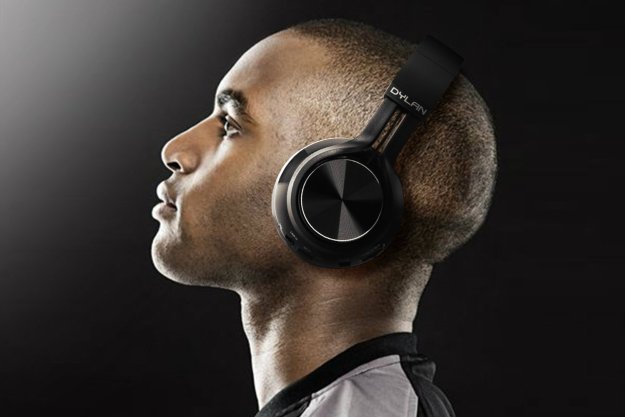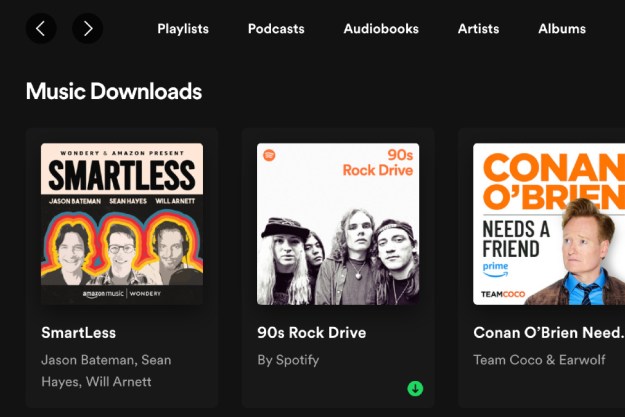Ask any drummer you know. The cool effects offered by 21st century electronic drum kits are fun, but there’s nothing like the feeling of playing real, acoustic drums. But what if you could have both? This is the goal of Yamaha’s new EAD10 drum console. A microphone and drum trigger combination that sits on your kick drum, the EAD10 works with a special control module to allow you to manipulate the sounds of your live drums, adding effects like reverb, flanger, vintage drum simulations for a fun practice experience, or even the replication of studio effects in a live setting.
After a few days playing with the EAD10, we found ourselves very excited by the new technology. With a wide array of available effects, Yamaha’s device offers acoustic drummers more opportunities for sonic exploration in an intuitive form that doesn’t require oodles of experience or expensive studio gear.
Features/Design
The EAD10 arrives in two main pieces: A small metal module with a white racing stripe that contains the microphone and bass drum trigger to capture your drum sounds, and a black control surface with a backlit screen and a myriad of knobs to control your sound effects.
The back of the EAD10 control module contains an impressive number of connections. Those include quarter-inch connections for the included audio cables to connect to the microphone unit, two quarter-inch mono outputs for sending sounds to outboard recording or mixing gear, three additional inputs for optional drum triggers, a foot switch port, and two USB ports (one in, one out), as well as a 12 volt power input. The front of the device features a quarter-inch headphone jack, allowing you to listen to your effects in real time through your favorite headphones while you play.
The top of the control unit allows you to control both headphone and master out volume, while four nobs allow you to pick and blend effects into your overall drum sound. There’s also a number of small buttons on the right side of the unit that allow you even more granular choices in terms of playback and drum tones.
The EAD10 transforms live drum sounds with compelling and realistic effects.
The EAD10 comes with 50 preset effects on board, including reverbs, compression, phaser, and even a pretty cool ‘80s drum sound replica. In addition, with 200 available user preset slots that you can save to, there is plenty of room on the device to create and save cool new drum sounds. The only limit is your own creativity.
With the addition of the company’s Rec’N’Share app, EAD10 owners can also record and edit videos of themselves playing using just the device and a smartphone — a cool addition for those who want to share interesting sounds or rhythms on YouTube or elsewhere.
Setup
Setting up the EAD10 is as simple as screwing the padded microphone into the inner hoop of your kick drum, connecting it and plugging it in to your control unit. From there, simply power the device on, plug in some headphones, and pick a sound to start playing around with.
If the device is being used on stage or in the studio, the engineer will want to take pull the signal from the right and left mono outputs on the back of the device, both of which are clearly labelled.
Performance
As an acoustic drummer who has been playing for two decades, this writer took a personal interest in this new piece of drum technology. In general, the EAD10 exceeded expectations, transforming live drum sounds with compelling and realistic effects that made it very fun to play certain rhythms and styles.
There’s plenty of room on the device to create and save cool new drum sounds.
Whether just adding a touch of reverb or compression to fatten up live drum tone in headphones, adding cool psychedelic effects like phaser, or simulating the calfskin drum heads of old, the EAD10 is quick and accurate in the way it shifts drum tones, and very easy to adjust on the fly. In addition, the well-lit display and LEDs surrounding the three primary dials makes it easy to pick new tones and shape them in dark rooms — and would no doubt come in handy for onstage use, as well.
One place we probably wouldn’t use the EAD10 is to record drums for an actual album or studio-style release. The fact is, most of the effects on offer are also inside the vast majority of modern digital audio workstations (DAWs), and besides, you’re going to want more than a single microphone for a great studio drum sound.
Still, for drummers who have always been jealous of the way guitar players can shape their tone through outboard pedals (like yours truly), Yamaha’s device provides that enviable functionality in a simple package. With just a few turns of a dial, the EAD10 allows you to drastically change your tone to suit whatever style of music you’re playing or practicing.
The device would likely come in particularly handy during live shows, especially when replicating the often-affected drum sounds found on many recordings. It does require a venue with a big enough PA to handle drum microphones — some smaller rooms may not — but the possibilities are very cool. If, say, you want to add some of the big-room reverb that’s a hallmark of bands like Led Zeppelin, it’s instantly available to you on stage for a quick tweak of your sound.
Conclusion
The EAD10 is a cool piece of drum gear that allows drummers a wide range of tones that have previously only been available in the studio, and that makes it a very cool item in the world of rhythm. As a stand-alone effects unit for live drums, it occupies an interesting niche in the market, and we wouldn’t be surprised if we started seeing more and more drummers using them on stage in the future.









